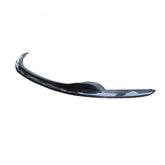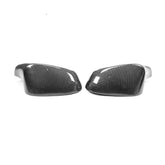Introduction
Owning a BMW M Series is a commitment to maintaining a high-performance vehicle engineered for peak output. Regular maintenance not only preserves the driving dynamics but also helps in extending the lifespan of the vehicle. This guide offers comprehensive insights into maintaining your BMW M Series, ensuring it performs at its best.

1. Regular Service Intervals
Understanding the Service Schedule
BMW M Series vehicles come equipped with a condition-based service (CBS) system that alerts you when maintenance is needed. It’s crucial to adhere to these alerts and check the owner's manual for specific maintenance schedules.
- Typical Intervals: Oil changes should be performed every 5,000 to 7,000 miles, while other fluids like transmission and differential may have longer intervals.
2. Engine Maintenance
Oil Changes
Regular oil changes are critical for high-performance engines to ensure they run smoothly and efficiently. Use only the recommended grade of oil, which is typically a high-quality synthetic formulated to handle high temperatures.
- Tip: Always replace the oil filter with every oil change.
Spark Plugs and Ignition System
Replace spark plugs according to the manufacturer’s recommendations, usually around every 30,000 miles. Ensure the ignition system is checked periodically to avoid misfires or poor engine performance.
3. Cooling System Care
Radiator and Cooling Channels
Check the radiator, hoses, and connections for leaks or wear regularly. The cooling system should be flushed and the coolant replaced every two years to prevent overheating and corrosion within the engine block.
- Preventative Measure: Keep an eye on coolant levels and top up with the correct antifreeze mixture as needed.
4. Transmission and Drivetrain Maintenance
Gearbox Fluid
For M Series models with a dual-clutch transmission (DCT), it's important to change the transmission fluid every 30,000 to 40,000 miles. Regular inspections will help catch any potential issues early, such as leaks or wear in the transmission system.
- Clutch System: Manual transmissions require periodic clutch adjustments and potential replacement if slippage occurs.
Differential
Check and replace the differential fluid according to the service interval. This is crucial for vehicles frequently driven in high-performance settings.
5. Brake System Checks
Pads and Rotors
Due to the aggressive braking required in high-performance vehicles, check brake pads and rotors regularly. Replace pads if they are worn down to the minimum thickness.
- Brake Fluid: Replace brake fluid every two years to maintain optimal braking performance and safety.
6. Tire Management
Rotation and Alignment
Rotate tires every 5,000 to 10,000 miles to ensure even wear. Check for proper alignment annually or if you notice any handling issues, as M Series vehicles are sensitive to changes in alignment.
- Pressure Checks: Regularly check tire pressures, adjusting as needed for different driving conditions.
7. Exterior and Interior Care
Bodywork
Regularly wash and wax the vehicle to protect the paint from environmental damages like UV rays and salt. Inspect for any signs of rust or damage, particularly after winter.
- Interior: Use quality cleaning products designed for the materials in your M Series to keep the interior in excellent condition.
8. Software Updates
Keeping Systems Current
Modern vehicles like the BMW M Series rely heavily on software. Ensure your vehicle’s software is up to date to keep electronic systems functioning correctly.

Conclusion
Maintaining a BMW M Series requires diligent care and attention to detail. By following a strict maintenance schedule and addressing small issues before they escalate, you can ensure that your M Series continues to deliver the high-performance driving experience that BMW is known for. Regular professional inspections and servicing are recommended to keep your vehicle in peak condition and to enjoy the thrill of driving an M Series for many years to come.










